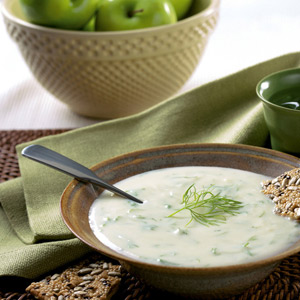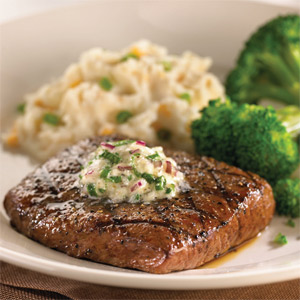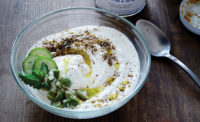So what actually is savory? That question is best answered by saying what savory is not, and that is sweet. When you look at the five human tastes — bitter, salty, sweet, sour and umami — savory is closest to umami, but also can possess some salty, bitter and sour, just never sweet.
Savory is not a stand-alone taste. There are only the five. Rather, it is a flavor profile, one that can also include other flavor sensations such as astringency and heat.

|
Umami has only become accepted as a basic taste in recent years, and still many scientists have not embraced its inclusion. The reason is that, for the most part, umami can, at best, be described as not salty, not sour, not sweet and not bitter. So, if it’s not one of those four, by default, the taste is umami.
Umami has been understood in China and Japan for more than a millennium. There is no simple definition for umami, but it is generally recognized as being the meaty or brown tastes that round out other flavors and taste sensations. It has been linked to specific amino acids, which are the building blocks of protein – hence, the meat connection.
In the culinary world, savory is an aromatic herb from Southern Europe that is a cross between mint and thyme. Fresh or dried, the herb savory is a popular flavoring for salads and grilled meat; dried savory is used to flavor soups, pâté and a number of center-of-plate dishes. Savory is regularly found on Bulgarian tables, next to the salt and paprika.
For these reasons, in the world of dairy, the term savory is associated with herbs, vegetables, peppers and cured meats. And as you will see from the new products profiled this month, these ingredients have application in all types of dairy products.
From bacon melding with cheddar cheese to dill complementing cultured milk, savory inclusions and flavors readily adapt to dairy products. Many savory flavors are considered bold tastes and often have ethnic origins.
According to a recent Euromonitor report on the U.S. packaged foods market, Americans have become more adventurous eaters. Their interest in ethnic foods has exploded in recent years due to the growth in the Asian and Hispanic populations, as well as increased exposure to other cuisines through television and the internet.

|
The Millennial generation (born between 1980 and 2000) is driving the demand for ethnic foods, along with bolder and spicier flavors. In turn, packaged food manufacturers are spicing up their offerings to respond to consumer tastes.
It’s no wonder the annual Top-10 Flavors & Fragrances list from Bell Flavors & Fragrances Inc., has a savory spin to it this year. The top flavors were selected through three different processes of analysis: tracking samples that have been requested over a 12-month period, trend scouting by its internal marketing and R&D departments worldwide, and tracking trends through external databases.
The theme for this year’s Top-10 Flavors list is “Emerging Cultures.” With many consumers traveling more and sampling new flavors from around the world, there is interest in bringing these global taste experiences home and infusing these flavors into their daily diets. The company predicts that flavors of Korean cuisines will make an impact this year, followed by Cajun and Greek. The top savory flavors for the year, many of which can be worked into dairy products, are:
• Black Garlic
• Rich Umami
• Truffle Oil
• Aged Cayenne Pepper
• Nuc Maum
• Calamansi Lime
• Demi Glace
• Harissa
• Aji Panca
• Paneer Cheese


